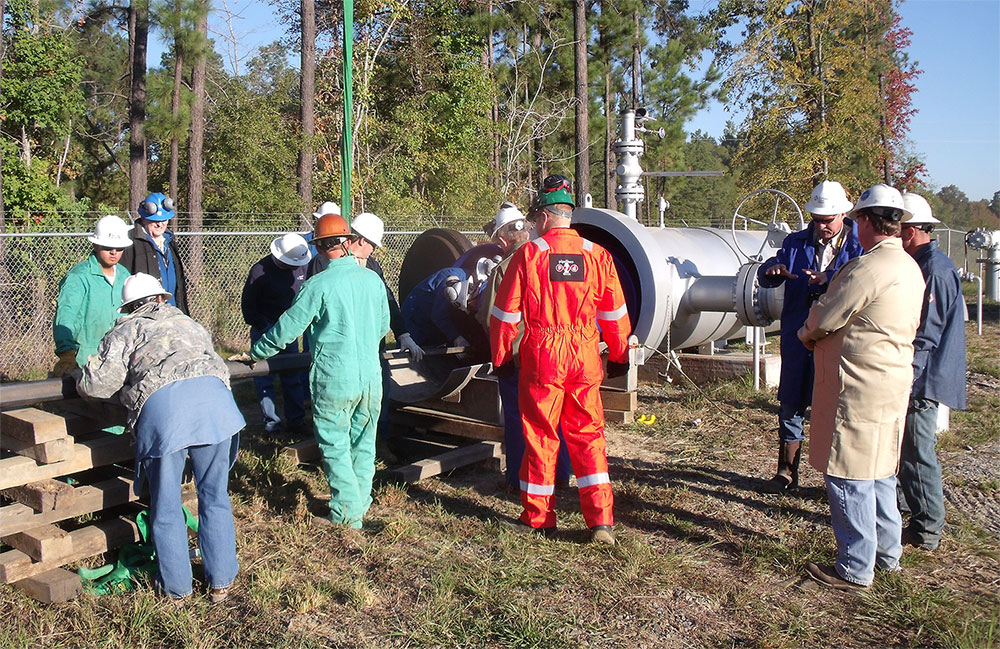In order to assess whether pipeline pigging is a viable option, there are a number of considerations that must be taken into account. The following are some of the main pigging considerations that are commonly used by maintenance crews around the world.
Desired Result: The length of pipe and type of fittings to be negotiated and pressure and flow available will determine the type of pig and frequency it may be run. Removing liquids such as water, oil, condensate or even product such as yogurt from a line will require a high sealing pig like the Foam Disc Pig or VIPRS®. Removing wax could require more rigid discs, but will bypass to keep the wax moving ahead of the pig. Tight radius bends could require an all urethane pig like a Uni-Flex® or MULTI-CAST™. When frequent maintenance pigging is required perhaps replaceable discs or cups, such as our BD-6 Series pig configuration, may be more economical.

Pipeline Design and Fittings: The pig launcher and receiver are two important fittings in pipeline pigging. The launcher is used to introduce the pig into the pipe and the receiver collects it once the cleaning job is done. Safety closures prevent accidents from happening by limiting access to the pipeline while it’s under pressure to retrieve the pig. Dust bags can be used to catch dust and debris removed by the pig. Barred tees will prevent the pig inadvertently traveling into a branch line, and long radius bends aid the progress of the pig.
Valve and Internal Obstructions: Pipes with varying internal diameters and valves could prove to be a challenge during pigging. In light of this, before any pigging starts, it’s important to clearly establish if there are any internal features that might affect the pig’s progress. This will help maintenance crews use appropriate pigs and pigging methods.
27731 Commercial Park Road
Tomball, Texas 77375
Tel: +1 -281.401.8142
Toll-Free: +1 -888.973.0079
Fax: +1 -281.401.8147
Simple Pigging System with Drop-Out
Simple Pigging System Closure
This animation demonstrates a simple pigging system closure. Inline’s VIPRS pig is positioned in the launcher as the product is run through the pipeline. At the end of the product run, the VIPRS pig is launched to remove all product from the line. The pig will trigger the indicator to alert that the pig has reached the end of the line.
Bi-Directional Pigging
This animation demonstrates Bi Directional Pigging. Inline’s VIPRS pig positioned in the launcher as product is run through the pipeline. At the end of the product run, the VIPRS pig is launched to remove all product from the line. When the VIPRS pig reaches the JB receiver, the propelling media is turned-off. When this happens the VIPRS pig is resting at the jail bar in the JB receiver; propellant is used on the receiver side of the pig to return it to the launcher.
Automated CIP System
This animation demonstrates a fully automated VIPRS bi directional pigging process system with CIP. Inline’s VIPRS pig is first positioned in the pig launcher. The product is pumped from the storage tank to the destination. The VIPRS pig is then launched to push the remaining product to the destination and captured in the VIPRS wash chamber at the destination station. Next, the CIP solution is pumped through the line to wash the chamber and pig. Finally, the pig pushes the CIP solution out of the piping and leaving the pig clean and ready for the next product run.